International Day of Education In The International Education day, different countries organize different events and put the spotlight on the significant role of teachers in making education work for peace and development. The right to education is enshrined in article 26 of the Universal Declaration of Human Rights. The declaration calls for free and compulsory elementary education. The Convention on the Rights of the Child, adopted in 1989, goes further to stipulate that countries shall make higher education accessible to all. Education is key to sustainable development When it adopted the 2030 Agenda for Sustainable Development in September 2015, the international community recognized that education is essential for the success of all 17 of its goals. Sustainable Development Goal 4, in particular, aims to “ensure inclusive and equitable quality education and promote lifelong learning opportunities for all†by 2030. Challenges to achieving universal education Education offers children a ladder out of poverty and a path to a promising future. According to statistics shows about 265 million children and adolescents around the world do not have the opportunity to enter or complete school; 617 million children and adolescents cannot read and do basic math; less than 40% of girls in sub-Saharan Africa complete lower secondary school and some four million children and youth refugees are out of school. Their right to education is being violated and it is unacceptable. Without inclusive and equitable quality education and lifelong opportunities for all, countries will not succeed in achieving gender equality and breaking the cycle of poverty that is leaving millions of children, youth and adults behind. Education in Iran is centralized and divided into K-12 education plus higher education. Elementary and secondary education is supervised by the Ministry of Education and higher education is under supervision of Ministry of Science, research and Technology and Ministry of Health and Medical Education (medical fields). As of September 2015, 93% of the Iranian adult population are literate.In 2008, 85% of the Iranian adult population were literate, well ahead of the regional average of 62%. This rate increases to 97% among young adults (aged between 15 and 24) without any gender discrepancy. By 2007, Iran had a student to workforce population ratio of 10.2%, standing among the countries with highest ratio in the world.

Add new comment